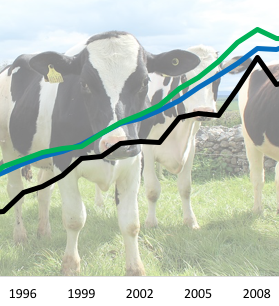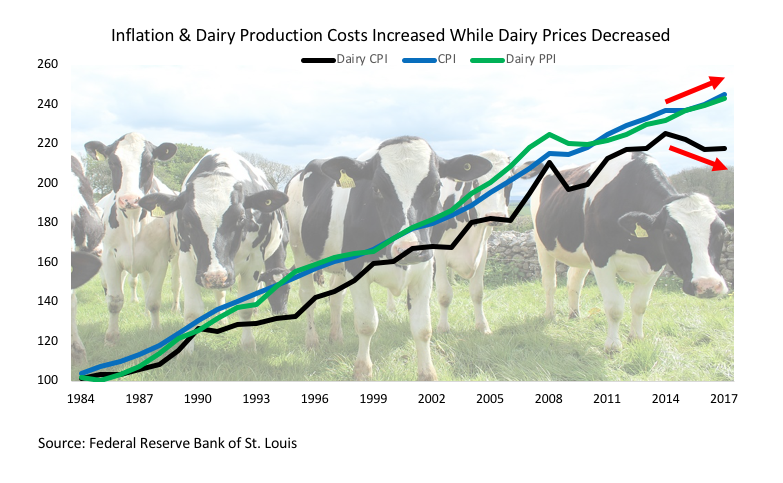More Trouble Ahead for Dairy Farmers?

By Alex Doherty |
June is national dairy month, but not all dairy farmers are milking it up. Dairy farms in the nation have declined every year over the past decade from 59,130 in 2007 to 40,219 in 2017 according to the USDA, and reports of struggling dairy farmers are more and more prevalent. Just over half of all dairy farms are in the Midwest, and these states have been hit the hardest over the past decade, suffering a 34.5% decline from 32,245 farms to 21,120 farms.
Wisconsin is home to nearly one-quarter of all dairy farms in the nation. In that state, dairy farms declined by more than 5,000 from 2007 to 2017. As all states have lost at least 12% of their dairy farms since 2007— no state has escaped the dairy decline.
A number of factors impacted the declines in dairy farms:
- dairy substitutes gaining market share
- milk consumption declining
- dairy production rising
- production costs increasing
- major retailers consolidating their supply chains
Taken together, these conditions have created a perfect storm for the dairy industry.
In recent years the consumer price index (CPI) for dairy and related products has decreased, diverging from the overall consumer price index and the producer price index (PPI) for dairy manufacturing. As the costs for dairy production have risen in line with inflation, shown in the chart below by an average annual increase in the CPI of 1.2% from 2014 to 2017, the CPI for dairy products has decreased at an average annual rate of 1.2% over the same period. Unless something changes in the dairy market, this divergence in price indexes could spell more trouble for dairy farmers.
Subscribe to the Weekly Economic Update
Subscribe to the Weekly Economic Update and get news delivered straight to your inbox.
